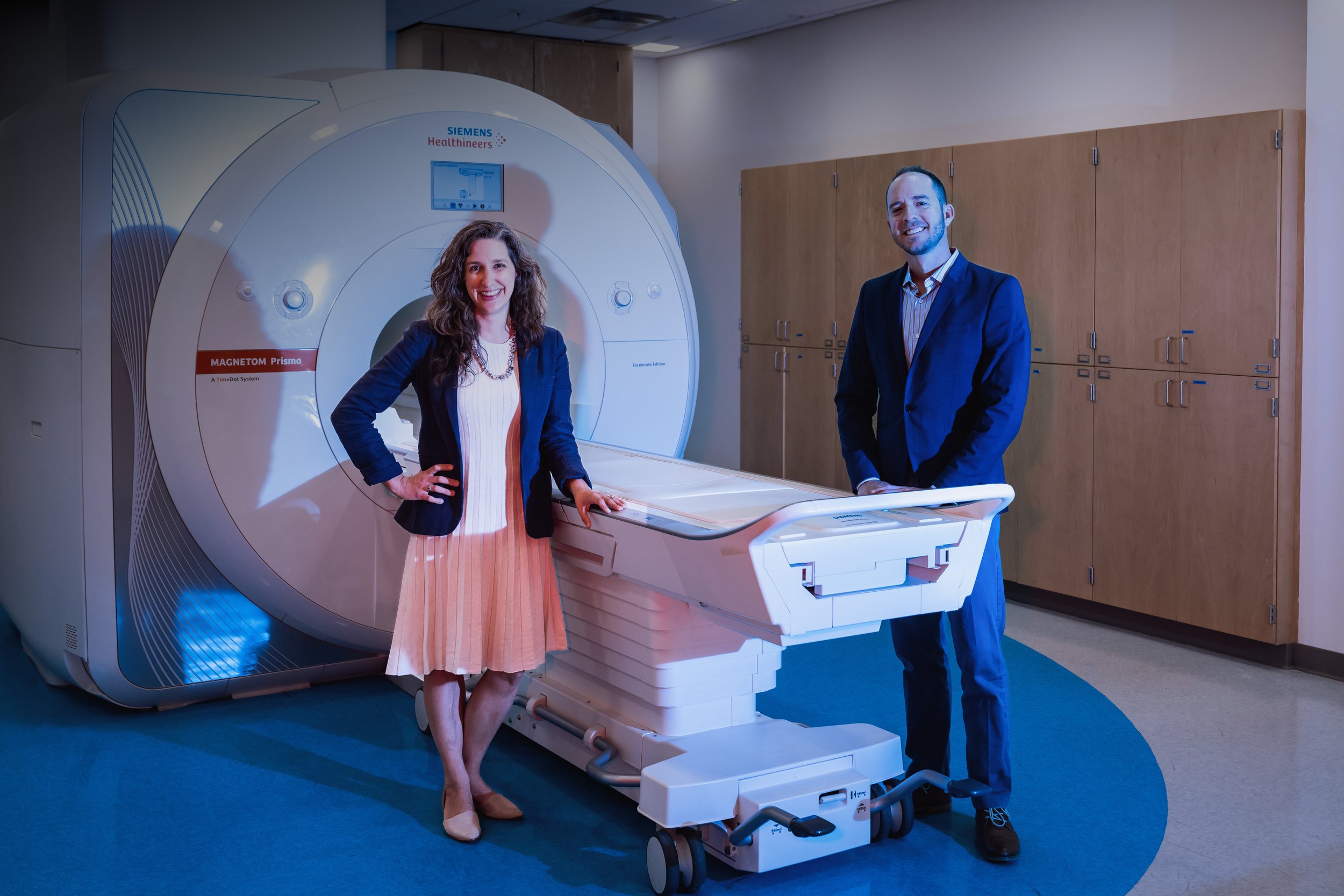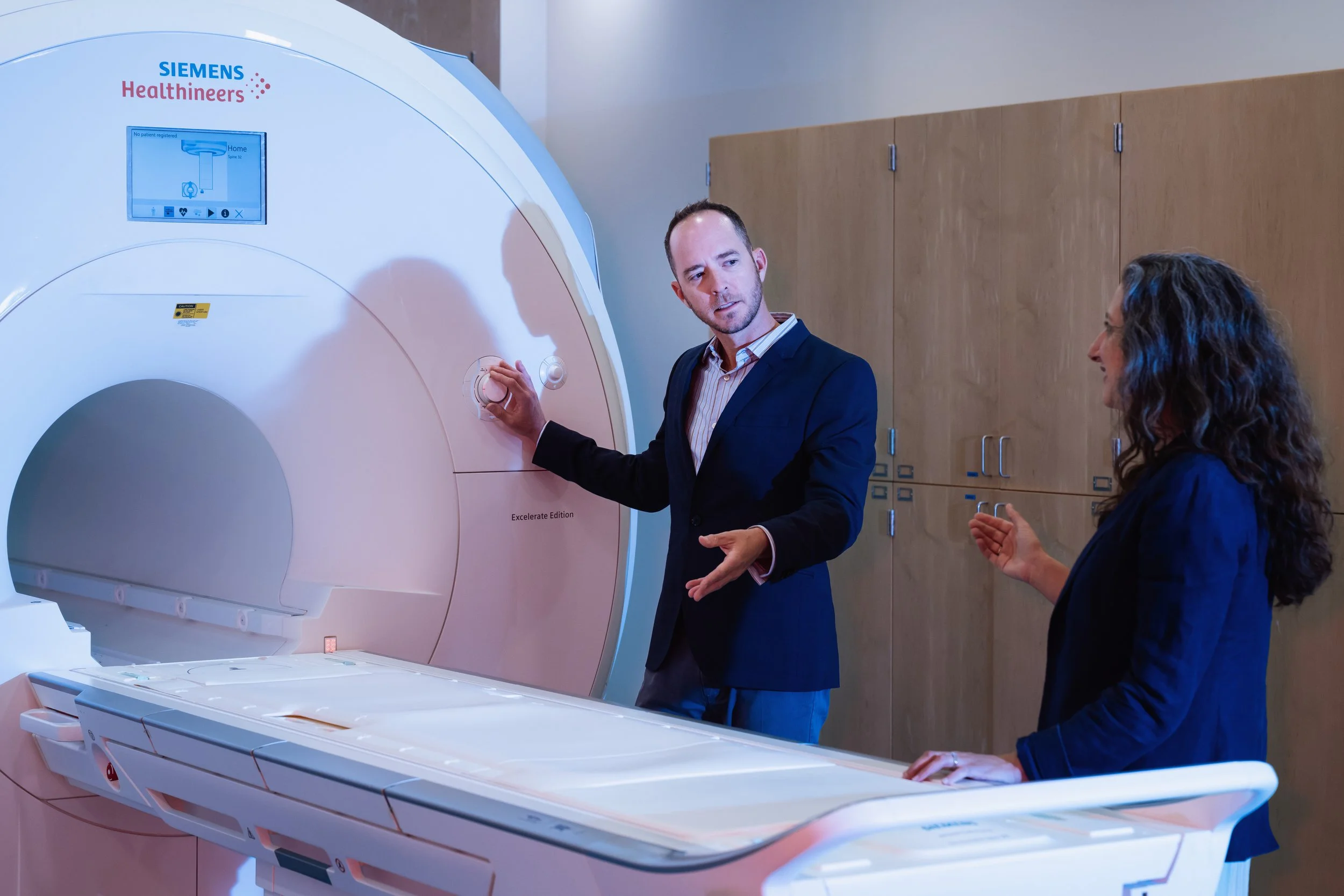
Predicting the Unpredictable
Jack Virostko, Ph.D., & Elizabeth Widen, Ph.D.
Gestational diabetes can impact long-term health for both mom and baby — but despite the existing gauntlet of prenatal tests, it’s difficult for doctors to predict if a patient will develop the condition.
Drawing on cross-campus expertise in nutrition, medical imaging, artificial intelligence and more, researchers at The University of Texas at Austin are bringing solutions within reach.
Pregnancy is a unique time for the pancreas: It’s the only time other than childhood where there’s an increase in the number of cells that produce insulin.
Pilot studies from researchers at The University of Texas at Austin indicated the possibility that pregnant women with smaller pancreas sizes have an outsized risk of developing gestational diabetes. Now, the charge taken up by Jack Virostko, Ph.D., and a team including Elizabeth Widen, Ph.D., R.D., is to confirm whether that’s indeed the case. And if a small maternal pancreas is found to be a predictor of diabetes risk, it could influence clinical practices surrounding prenatal care, leading to more targeted monitoring and prevention strategies.
Partnerships
- Dell Medical School
- College of Natural Sciences
- School of Human Ecology
- Oden Institute for Computational Engineering & Sciences
“If you have gestational diabetes, you have higher risk of having babies who are born too big or being large for gestational age, and when you have babies who are that big, there are other complications that can arise for mom,” says Widen, an assistant professor in the Department of Nutritional Sciences. “There's a cascading effect on other aspects of health; being exposed to gestational diabetes in utero is also associated with different growth changes in the baby, and babies exposed to gestational diabetes broadly are at higher risk for obesity.”
A New Frontier for Medical Imaging
Funded by the National Institutes of Health, the team is using MRI scans and AI algorithms to quantify the patterns of pancreas size and function over time, rather than the typical metabolic approach using blood samples.
“I'm trying to demonstrate the value of abdominal imaging, such as MRI, for patients with diabetes,” says Virostko, an associate professor in the Department of Diagnostic Medicine. “Other diseases have benefited so much from imaging — it’s a cornerstone of cancer diagnosis and monitoring, for example. The blood-based measurements that we use to diagnose and track diabetes are lagging indicators of disease — they tell us what has happened but can’t predict what will happen.
“Pregnant women are getting ultrasounds all the time to look at the baby, and an easy path to clinical translation could be moving the ultrasound transducer up to look at mom’s pancreas and have an earlier opportunity to make interventions.”

